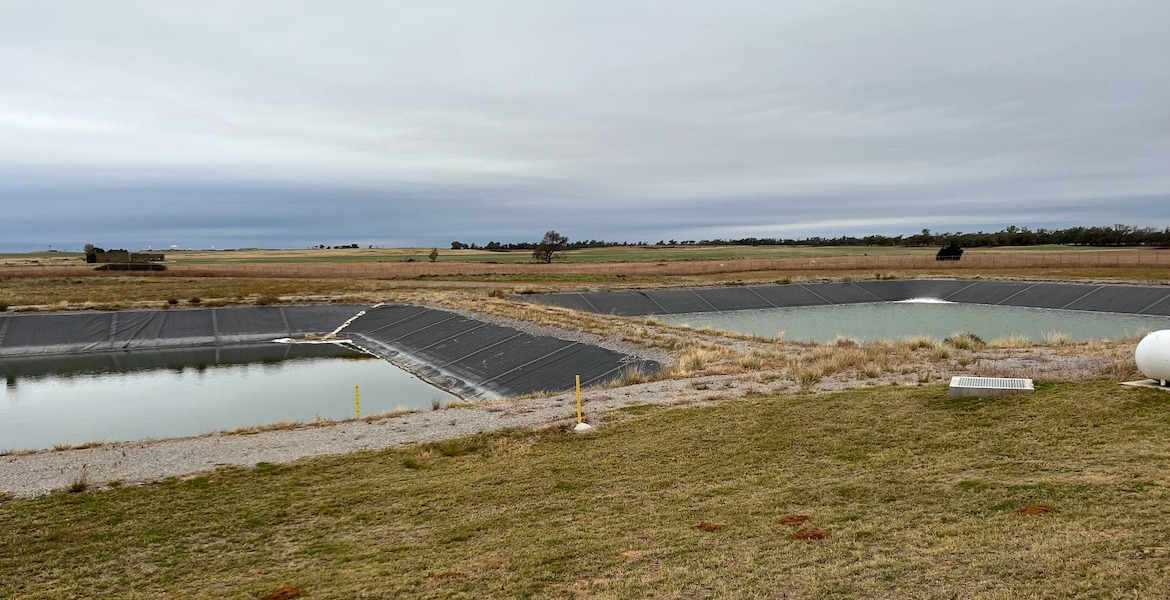
Small communities seek resources to improve water infrastructure
Thursday, November 4, 2021
Media Contact: Gail Ellis | Communications Specialist, Copywriter | 620-515-2498 | gail.ellis@okstate.edu
Safe and clean water a luxury for some rural residents as small municipalities are struggling to provide a viable water utility service.
“Small towns and communities often lack the funding to address infrastructure challenges with water and wastewater,” said Kevin Wagner, director of the Oklahoma Water Resources Center at Oklahoma State University. “This is a major concern and public health issue across the state and country.”
Battling nitrates
A decade ago, the city of Hollis, whose current population of 1,800 resides in southwest Oklahoma’s Harmon County, needed to resolve the high levels of nitrates in its water. Nitrates are an inorganic form of nitrogen commonly used as fertilizer for lawns, landscapes and in production agriculture. Excessive amounts in drinking water, however, can threaten human health, especially in babies and expecting mothers.

“We now have the cleanest water we’ve ever had,” City Manager Mark Whisenant said. “Our foreman over the water and sanitation department monitors the plant regularly through apps on his phone and laptop. He gets a warning if something is not functioning right. It’s a pretty sophisticated system.”
With $3.2 million provided in rural development loans, funding from Indian Health Services federal agency and Rural Economic Action Plan (REAP) grants, the city of Hollis fixed its water problem, but many small towns are still looking for answers.
“A plant like the one in Hollis would be a dream for our town,” said Bryant Ferris, the mayor of Tipton in Tillman County.
Grant writers working overtime
Tipton also fights a nitrate issue with the water pumped from its main well. To remain in compliance with Oklahoma Department of Environmental Quality standards, it accesses a water line from nearby Frederick to provide a blend of water that’s 80% water from its well and 20% from the city of Frederick.
“Anytime there’s a particulate in our water, the chlorine from Frederick’s water adheres to it,” Ferris said. “Frederick’s nitrates are low, but its total trihalomethanes are super high. We’re constantly toggling valves back and forth to blend the two water sources.”
A town of about 750 people, Tipton’s sole source of income is providing water to residents, and that requires a cost-effective strategy. Relying on its own well water is much cheaper than paying to access Frederick’s line, but its well’s nitrate levels have forced the municipality to search for alternatives.
“We have drilled test wells and found some low in nitrates outside of town, but we couldn’t afford to pay for the pipeline,” Ferris said.
Another option is obtaining infrastructure funding through federal COVID-19 relief projects that are earmarked for utilities, such as water and wastewater.
Assistance from the Council of Governments
Ferris said the goal is to track down enough money to build its own water treatment facility. While Tipton’s grant writer works overtime, the Association for South Central Oklahoma Governments and similar agencies support utility upgrades.
“Working with small towns to help them obtain grants and loans to improve their infrastructure is our sole purpose,” said Tom Zigler, ASCOG director of community and economic development. “Once we fix a problem, we work on sustainability. We want to make sure that after a town spends $500,000 to $1 million on a project, they have the ability to sustain its new system.”
Zigler and ASCOG serve as a lifechanging resource for small towns. The association combines REAP grants with funding from the U.S. Department of Agriculture or other community block grants, and it can help towns join loan programs offered through the Oklahoma Water Resources Board.
“Small towns don’t have the staff or funding to pay people to work on their water or sewer treatment facilities,” Zigler said. “We team up with the Oklahoma Rural Water Association to educate small towns on administrative responsibilities, such as establishing a water maintenance schedule or understanding water rights. Consulting with municipalities and helping them find money is part of protecting public health and keeping a community safe.”
Between resources available through the ORWA, the ODEQ and the OWRB, small towns can identify funding channels, receive discounts and schedule training for construction, rehab, maintenance or survey work related to water and wastewater systems. Zigler said federal funding is available through the American Rescue Plan Act of 2021, but the application process can be overwhelming for a small municipality.
“Small towns are ham strung with staff unless they get involved with their local council of governments group or economic development district,” he said. “The best advice I can give is find out who that is in your area and contact them. That’s what we’re here for.”
In addition to COGs across the state, OSU Extension is a valuable resource, providing inexpensive and reliable soil, water and forage testing at its laboratory in Stillwater. The facility also works closely with the Okahoma Water Resources Center to promote responsible and sustainable water practices for all Oklahomans. As communities gather funding to address their infrastructure needs, the water center is developing a pilot program to help towns and residents sourced by well systems monitor their water safety.
